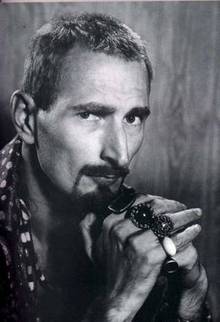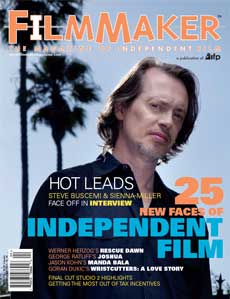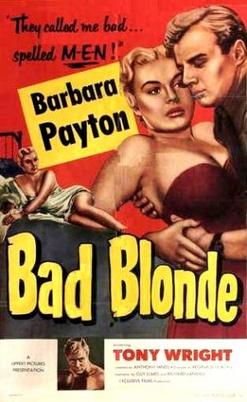Related Research Articles

Gilda Susan Radner was an American actress and comedian. She was one of the seven original cast members of the "Not Ready for Prime Time Players" on the NBC sketch comedy series Saturday Night Live from its inception in 1975 until her departure in 1980. In her routines on SNL, she specialized in parodies of television stereotypes, such as advice specialists and news anchors. In 1978, Radner won an Emmy Award for her performances on the show. She also portrayed those characters in her highly successful one-woman show on Broadway in 1979. Radner's SNL work established her as an iconic figure in the history of American comedy.

Essanay Studios, officially the Essanay Film Manufacturing Company, was an early American motion picture studio. The studio was founded in 1907 in Chicago by George Kirke Spoor and Gilbert M. Anderson, originally as the Peerless Film Manufacturing Company, then as Essanay on August 10, 1907. Essanay is probably best known today for its series of Charlie Chaplin comedies produced in 1915-1916. In late 1916, it merged distribution with other studios and stopped issuing films in the fall of 1918. According to film historian Steve Massa, Essanay is one of the important early studios, with comedies as a particular strength. Founders Spoor and Anderson were subsequently awarded special Academy Awards for pioneering contributions to film.

Sadism and masochism, known collectively as sadomasochism, are the derivation of pleasure from acts of respectively inflicting or receiving pain or humiliation. The term originates from Marquis de Sade, a French nobleman known for his libertine sexuality, and Leopold von Sacher-Masoch, an Austrian writer who described masochistic tendencies in his works. Sadomasochism is a subset of BDSM, a variety of erotic practices or roleplaying involving bondage, discipline, dominance, submission, sadism, and masochism.

Gene Wilder was an American actor, comedian, writer and filmmaker. He was mainly known for his comedic roles, but also for his portrayal of Willy Wonka in Willy Wonka & the Chocolate Factory (1971). He collaborated with Mel Brooks on the films The Producers (1967), Blazing Saddles (1974) and Young Frankenstein (1974), and with Richard Pryor in the films Silver Streak (1976), Stir Crazy (1980), See No Evil, Hear No Evil (1989) and Another You (1991).
An underground film is a film that is out of the mainstream either in its style, genre or financing.

Blonde stereotypes are stereotypes of blonde-haired people. Sub-types of this stereotype include the "blonde bombshell" and the "dumb blonde". Blondes have historically been portrayed as physically attractive, though often perceived as less intelligent compared to their brunette counterparts. There are many blonde jokes made on these premises. However, research has shown that blonde women are not less intelligent than women with other hair colors.

Jack Smith was an American filmmaker, actor, and pioneer of underground cinema. He is generally acclaimed as a founding father of American performance art, and has been critically recognized as a master photographer.
Structural film was an avant-garde experimental film movement prominent in the United States in the 1960s. A related movement developed in the United Kingdom in the 1970s.

Flaming Creatures is a 1963 American experimental film directed by Jack Smith. The film follows an ensemble of drag performers through several disconnected vignettes, including a lipstick commercial, an orgy, and an earthquake. It was shot on a rooftop on the Lower East Side on a very low budget of only $300, with a soundtrack from Smith's roommate Tony Conrad. It premiered April 29, 1963 at the Bleecker Street Cinema in Greenwich Village.
Cinemation Industries was a New York City-based film studio and distributor owned, Run and founded by exploitation film producer Jerry Gross.

Ken Jacobs is an American experimental filmmaker. His style often involves the use of found footage which he edits and manipulates. He has also directed films using his own footage.

The Planter's Wife is a 1952 British war drama film directed by Ken Annakin, and starring Claudette Colbert, Jack Hawkins and Anthony Steel. It is set against the backdrop of the Malayan Emergency and focuses on a rubber planter and his neighbours who are fending off a campaign of sustained attacks by Communist insurgents while also struggling to save their marriage.
Heritage film is a critical term to refer to a cluster or cycle of late 20th-century British films that were argued to depict the United Kingdom of the pre-World War II decades in a nostalgic fashion. Although this term was originally used to discuss the film genre polemically, its use has broadened out, and it is now also used more loosely to refer to period films with high-quality visual production values, including those produced in France, other European countries and beyond.

Filmmaker is a quarterly publication magazine covering issues relating to independent film. The magazine was founded in 1992 by Karol Martesko-Fenster, Scott Macaulay and Holly Willis. The magazine is now published by the IFP, which acts in the independent film community.

Linda Williams is an American professor of film studies in the departments of Film Studies and Rhetoric at University of California, Berkeley.

The Flanagan Boy is a 1953 British film noir directed by Reginald Le Borg. It was made by Hammer Film Productions and stars Barbara Payton, Tony Wright, Frederick Valk and Sid James. It was based on the 1949 novel of the same name by Max Catto.
The Millennium Film Workshop is a non-profit media arts center located in New York City. It is dedicated to the exhibition, study, and practice of avant-garde and experimental cinema. It was also where the St. Mark's Poetry Project began. Ken Jacobs stated in 2013 that he chose the name Millennium "...because it would have to be that to actually give out equipment, education, space to work in, etc. for free. Dictionary definition: 'A hoped for period of joy, serenity, prosperity and justice.' "
Beverly Grant was an actress and filmmaker who appeared in films by Andy Warhol, Jack Smith, Gregory Markopoulos, Ira Cohen, Ron Rice, and Stephen Dwoskin, on the off-off Broadway stage in works by Ronald Tavel and LeRoi Jones, as well as collaborated with her one-time husband, experimental filmmaker and musician, Tony Conrad. Smith, the avant-garde filmmaker of Flaming Creatures and Normal Love, in which Grant appeared, called her "the queen of the underground – both undergrounds."

Piero Heliczer was an Italian-American poet, publisher, actor and filmmaker associated with the New American Cinema.
Hilary Ann Radner Fox is an American–New Zealand film and media studies academic, and is a professor emerita at the University of Otago. Radner researches representations of gender in visual culture.
References
- ↑ Snow, Michael (1994). The Collected Writings of Michael Snow. Wilfrid Laurier Univ. Press. p. 285. ISBN 978-0-88920-243-6.
- 1 2 3 Pierson, Michele; James, David E.; Arthur, Paul (19 April 2011). Optic Antics: The Cinema of Ken Jacobs. Oxford University Press. p. 27. ISBN 978-0-19-538497-0.
- 1 2 Schneider, Steven Jay (1 October 2012). 1001 Movies You Must See Before You Die 2012. Octopus Publishing Group. p. 409. ISBN 978-1-84403-733-9.
- ↑ "Blonde cobra / a philm by Bobby Fleischner [and Ken Jacobs] with Jacky [i.e. Jack] Smith". UC Berkeley Library. UC Berkeley. Retrieved September 3, 2024.
- ↑ Moon, Michael (January 1998). A Small Boy and Others: Imitation and Initiation in American Culture from Henry James to Andy Warhol . Duke University Press. p. 88. ISBN 0-8223-2173-4.
- ↑ Radner, Hilary; Luckett, Moya (1999). Swinging Single: Representing Sexuality in the 1960s. University of Minnesota Press. p. 69. ISBN 978-0-8166-3351-7.